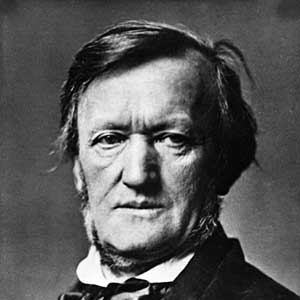Richard Wagner
Info
-
02/13/1883
-
Germany
Romantic
Opera
Biography
Richard Wagner spent his childhood in Dresden, Germany and later studied music in Leipzig from 1831 to 1833, where he attended a performance of the 9th Symphony by Beethoven in 1828. He later worked as a chorus and music director in several towns, ending with Riga in 1836, where he married Minna Planer on November 24th. In 1843, after the performances of his operas Rienzi andThe Flying Dutchman in Dresden, Wagner was appointed the Royal Saxon music director of the court orchestra for life. After the completion of Lohengrin in May 1848, Wagner passionately engaged himself in the revolution. In autumn 1848, under the influence of the revolutionary events and the writings of Ludwig Feuerbach and Pierre-Jean Proudhon, Wagner conceived the fable that was later set to music in the tetralogy in his music festival, The Ring of the Nibelungen. Wagner was actively engaged in the Dresden uprising from May 3-9, 1849, and as a result he was forced to leave Dresden with the leaders of the uprising to avoid arrest, becoming exiled to Switzerland.
Main Works
Opera:
Die Feen (1833)
Das Liebesverbot (1836)
Rienzi (1837)
Der Fliegende Holländer (1841)
Tannhäuser (1845)
Lohengrin (1848)
Das Rheingold (1854)
Die Walküre (1856)
Tristan und Isolde (1859)
Die Meistersinger von Nürnberg (1867)
Siegfried (1871)
Götterdämmerung (1874)
Parsifal (1882)
Der Ring des Nibelungen (1876)
- Das Rheingold
- Die Walküre
- Siegfried
- Götterdämmerung


